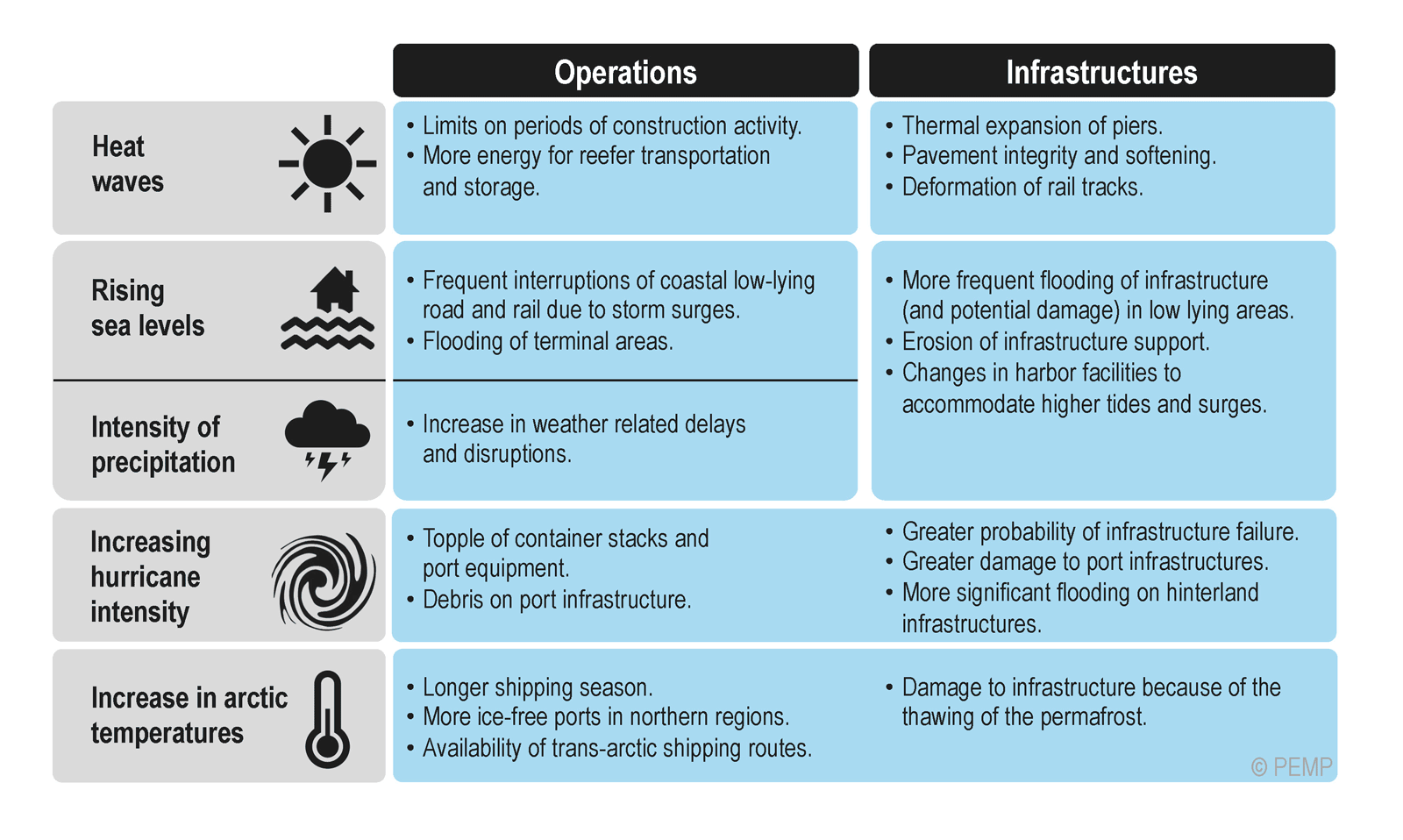Additional natural risks to port activity fall under the multidimensional impacts of climate change, many of which will potentially take place in the long term and difficult to evaluate. In addition to the risk of hurricanes, with which it may be associated, sea-level rise is of direct concern to port activity. However, port terminals are resilient facilities designed to handle tidal ranges. Any expected sea-level rise will likely impact surrounding infrastructure, such as access roads, before disrupting port infrastructure.
Elements associated with climate change have an array of potential impacts on transport operations and infrastructure (figure 30):
- Heat waves. These impair the construction and maintenance of port infrastructure by shortening and restricting work conditions. The cooling equipment of reefer transport is subject to additional loads on the electric grid and supporting power generation systems. Heat stress can negatively impact port infrastructure, such as the softening of pavement, which can then be substantially damaged by yard equipment, such as straddle carriers.
- Rising sea levels. In areas near ports, transport operations can be impaired by the temporary flooding of infrastructures accessing port facilities. Port terminals can also be flooded, damaging equipment and disrupting operations.
- Increase in intense precipitation events. These can damage transport infrastructure through flooding, disrupt maritime shipping operations, and cause delays.
- Increasing hurricane intensity. Due to higher humidity, the expectation is that hurricanes will release more rainfall and that their average intensity will increase. However, these expectations have not materialized, and the frequency and intensity of hurricanes have decreased since 1990 (Klotzbach, P. J. et al, 2022). Hurricanes impose substantial disruptions on port operations, including maritime shipping. The impacts are not confined to a single port but may affect a series of ports along the path of a hurricane, which varies in intensity as it evolves. For cruise operations in the Caribbean and elsewhere, hurricanes result in itineraries being changed. Very strong winds can topple container stacks and port equipment, such as cranes. The accumulation of debris can delay operations and add to maintenance costs.
- Increase in Arctic temperatures. The receding ice cover over the Arctic may extend the shipping season in the region. There is also the potential to use shorter Arctic shipping routes, shortening maritime shipping distances within the Northern Hemisphere.
Climate change can also affect the hinterland connectivity of ports. For example, climate change is expected to result in significant water level fluctuations on key inland waterways, e.g. the Rhine in Europe or the Yangtze in China. Extended periods of extremely low water levels jeopardize the continuity of inland barge service operations and negatively affect the utilization of inland vessels. In such cases, vessels have to sail below their actual loading capacity to restrict their draft. A similar risk has been observed in the Great Lakes system with a potential trend of higher levels of water fluctuation, with periods of lower-than-average water levels intermixed with periods of higher-than-average water levels. Navigation and shipping capacity become more challenging to plan which, in turn, has a knock-on effect on investments on new ships and equipment investment
Figure 30: Climate change potential impacts on maritime transport

Source: Adapted from National Research Council (2008).
